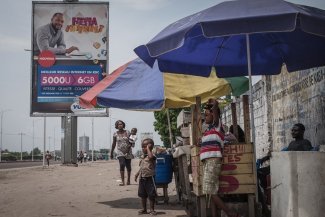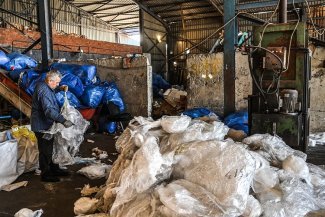The Canadian company Barrick Gold is one of the most powerful mining corporations in the world. Present in 12 countries with 26 mines, it reaped over 14 billion US dollars in revenue in 2012. If you have purchased any gold jewellery recently, there is a one-in-three chance that it was sourced from the company.
You couldn’t find a better contrast to Barrick’s almighty power than the Diaguita, an indigenous community of 1,500 people living in the Huasco Valley of the Chilean Atacama, a region also known as the Valley of Gold. Masters of irrigation, the Diaguita use their glaciers fed rivers to water their crops and raise cattle, which they have been doing since 1000 AD.
Yet Barrick Gold has different plans for the paradisiacal Huasco Valley. It decided to make it profitable by creating a massive open pit mine named Pascua Lama. Located on top of the Andes, in the border between Chile and Argentina, the project had its environmental impact assessment approved by both countries in 2006. Building works started officially in 2009.
It is estimated that Pascua Lama could produce 447 tons of gold. But to be able to access all this wealth, the company needs first to dig a small canyon that would stretch for over a mile across the mountains with a depth of 1,800 feet.
This will require at least 493,000 tons of explosives. A further 379,000 tons of cyanide will be used to extract the minerals by mixing it with the water coming from the glaciers.
The Diaguita, mostly led by women, are well known for their non-confrontational approach – which might explain why they survived successive invasions from Incas to Spanish conquistadores. However, they decided that they had enough of Barrick’s ideas to destroy and poison their homeland.
The conditions were set for one of the most heroic judicial battles in the history of South America. Recurring to their ancestral perseverance and strategic thinking, the Diaguita decided to sue Barrick for attempting to dry up their rivers.
There were more violations. Because Chile ratified Convention 169 of the International Labour Organisation, indigenous people must be consulted over any project that could affect their lands and rights.
As the legal process went on, a regional campaign started to highlight the impact that Pascua Lama would have in the region´s ecosystems and local communities.
The first signs of a colossal victory came in April this year, when Chile’s Environmental Superintendence suspended Pascua Lama´s building works for serious violations, including non-compliance in the project´s water management system.
Last Monday, on 15 July, a big stone hit the forehead of Goliath. A Chilean appeals court ordered the suspension of the construction until all measures required for water management are in place and ordered the mine’s environmental permit be reviewed.
Experts believe that this will delay the project for at least another two years, increasing costs and forcing the company to postpone its first production targets to mid-2016 – even if they can win in the courts, this would seriously cut profit margins putting the project viability at risk.
Recently, Ruth Trigo, a well-respected Diaguita leader tried to explain the key to their success: “We are disciplined and have only one spokesperson. Our unity is our strength. We are calm and hardworking. The love for our common roots and water as vital elements keep us cohesive. Against all this, even the most powerful of giants will eventually surrender.”









